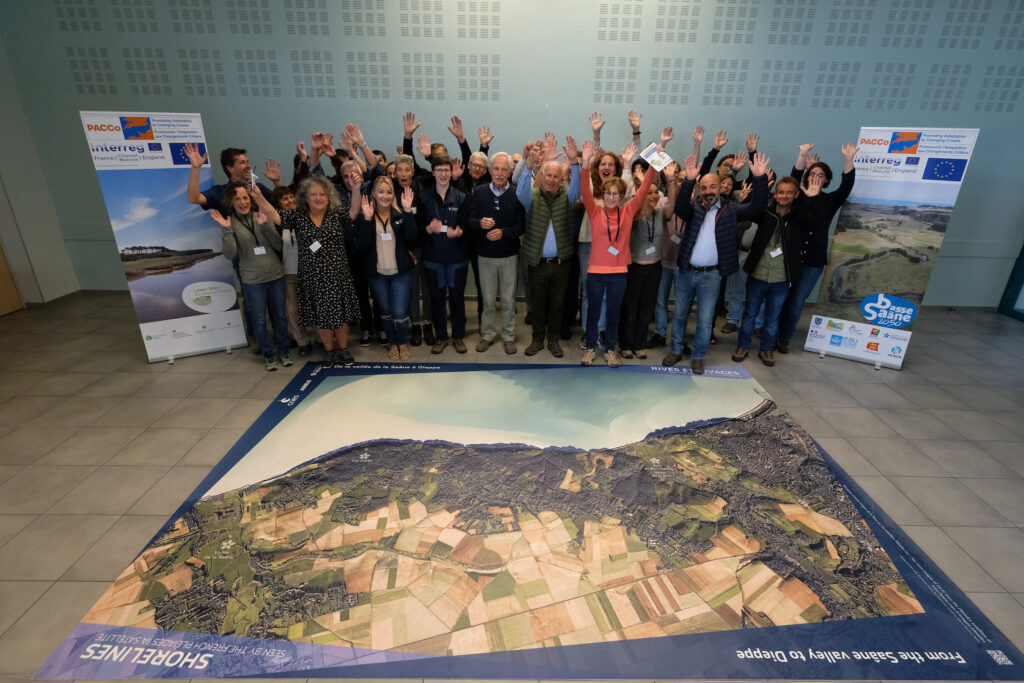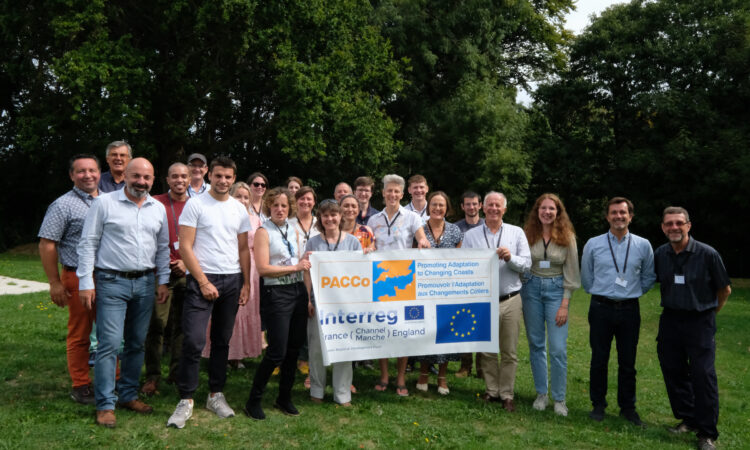
On Monday 4 September 2022, the English partners set sail to Normandy and the Saâne Valley to visit their French colleagues for the first in-person all partners PACCo meeting.
Travel over water is always exciting, and on reaching our destination at the foot of the Dieppe cliffs in early September, the still strange experience of receiving a passport stamp ‘chez’ our nearest European neighbour confirmed our arrival in Normandy.
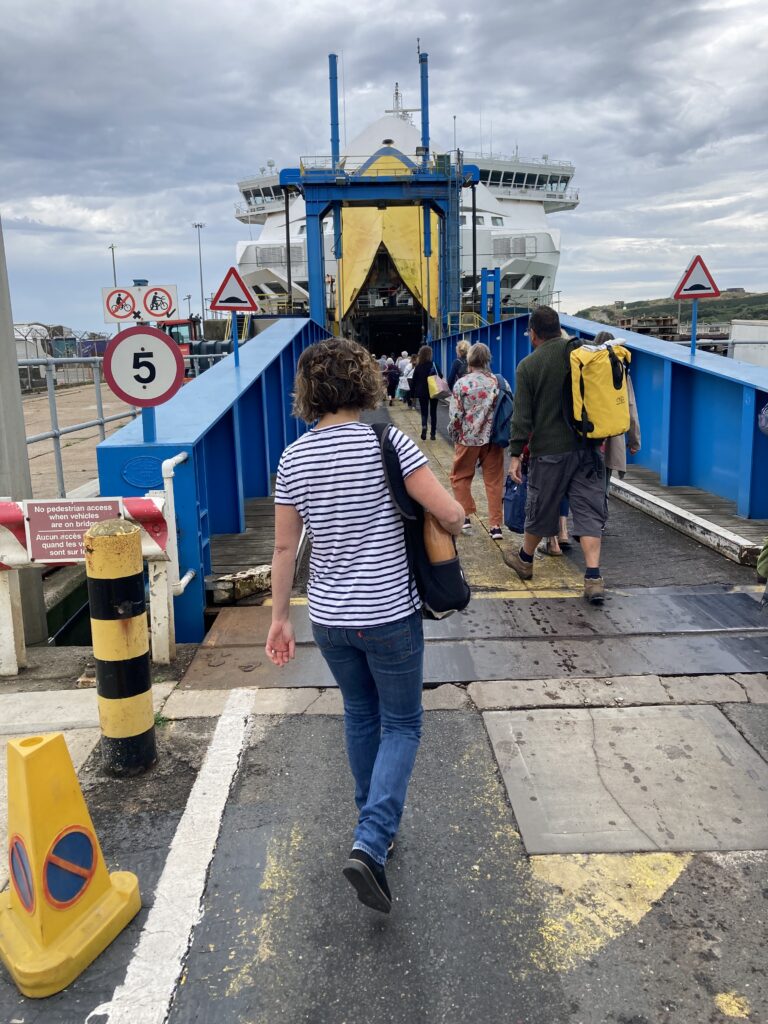
This piece of coastline was unknown to several of the English partners prior to the trip and it was obvious just how close roads, houses and infrastructure are to the coast, and how the Basse Saâne project, like the Lower Otter Restoration Project, will transform the sea frontage and floodplain entirely.
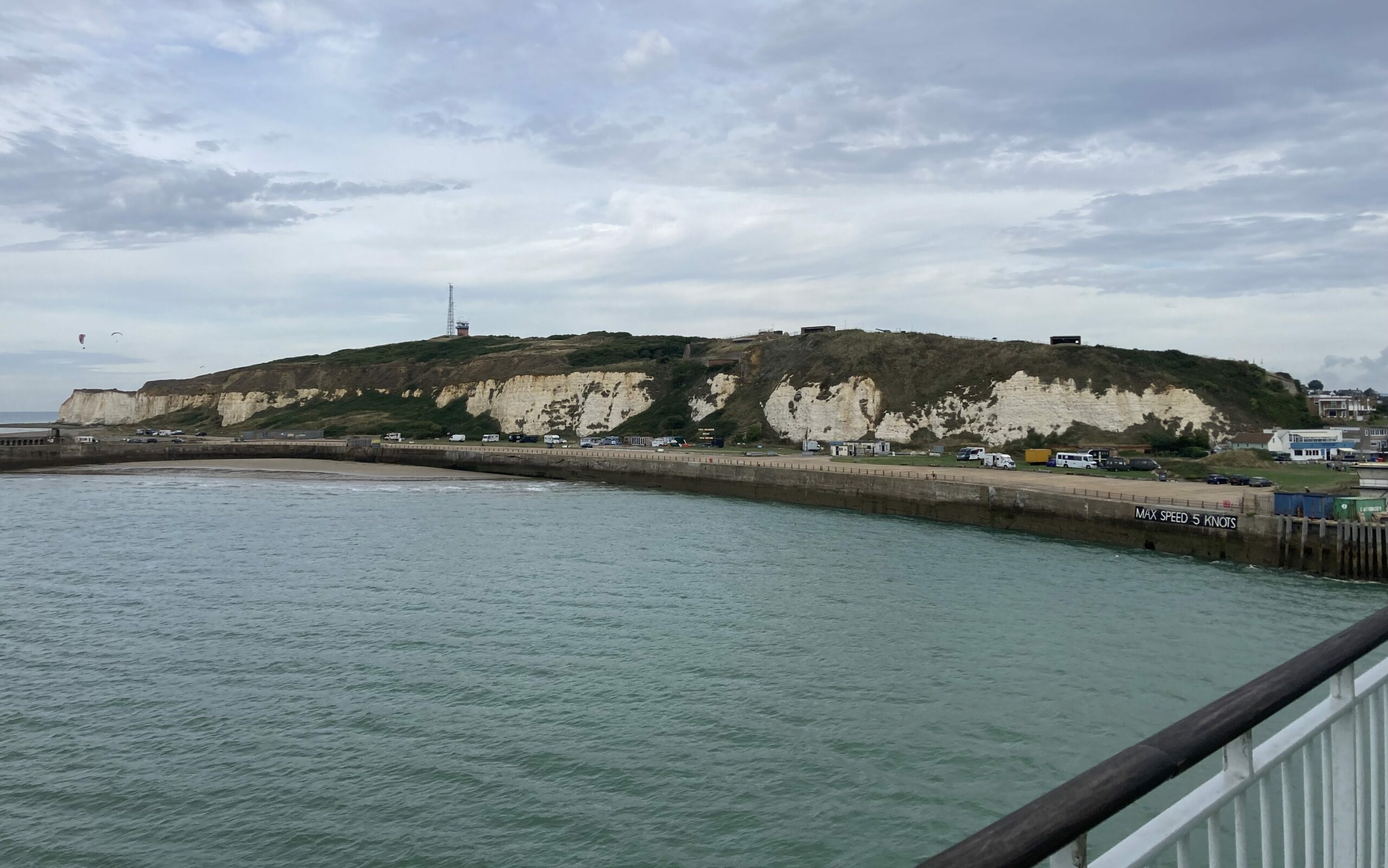
Our hotel position just behind the seafront gave us an incredible view of the pebble beach where 70 years previously, Operation Jubilee saw 237 craft deliver over 6000 soldiers of the Royal Canadian Regiment and others to ‘Juno’ Beach.
The welcome from our Conservatoire du littoral hosts was warm and generous, and our first night closed after a delicious aperitif on the port and a jovial meal together near the seafront. By midnight, East Devon Pebblebed Heaths Conservation Trust staff had joined the team and the PACCo all partners meeting was go!
On day two we got down to business and travelled to the Foyer des Jeunes in Quiberville where we received another warm welcome from Mayor Jean-François Bloc and his team, with a delicious choice of local products to set us up for the day.
For only the second time in over two years, all project partners were in the same room, able to chat about our work streams, our progress, common challenges and our hopes for the remaining nine months of the PACCo project, as well as its legacy. Our three French partners – the Conservatoire du littoral, Communauté des Communes de Terroir de Caux, and Quiberville Council provided an update on the most recent progress in the Saâne Valley and prepared us for our site tour the next day.
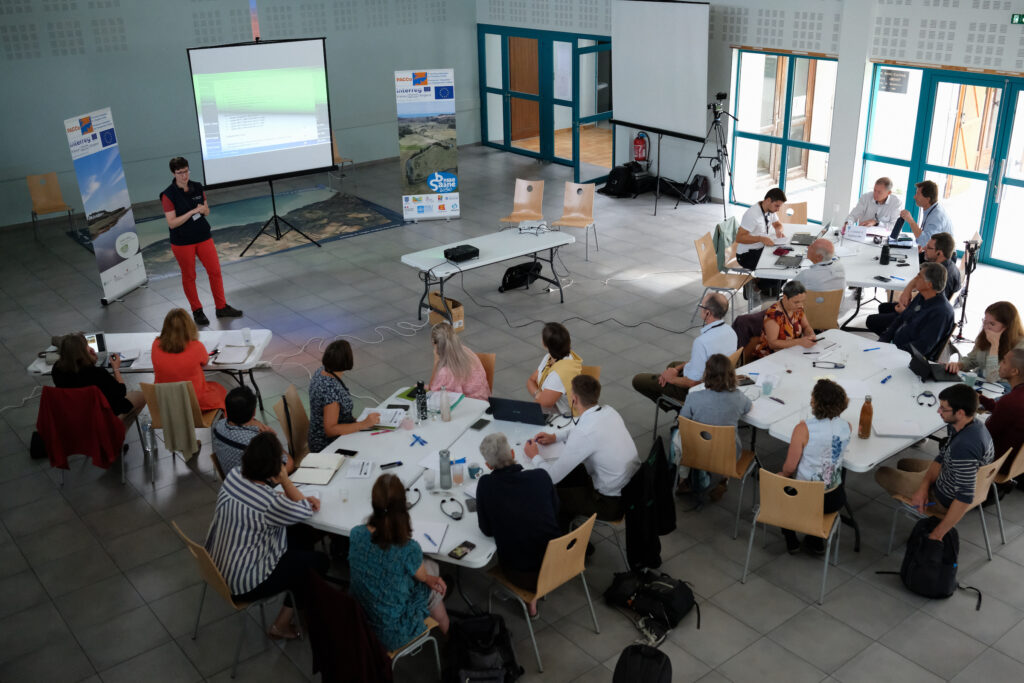
The Interreg team of Manon Paillier and Nataniel Williams ensured we were aware of how project closure will take place next summer. Such a lot to do before then!
The shared evening meal permitted the continuation of discussions around our ongoing work, as well as more time to cement relationships. The final stages of the project will be very busy, with cross-border webinars, educational presentations, the PACCo Final Conference in February 2023, and preparation for the Otter Valley breach in the spring.
Our third and final day was warm and dry, perfect for our tour on foot of the Saâne Valley. We began by visiting the impressive and sleek looking new wastewater treatment plant. The engineers amongst us were delighted to find out more about the technology being employed in this important part of the project works.
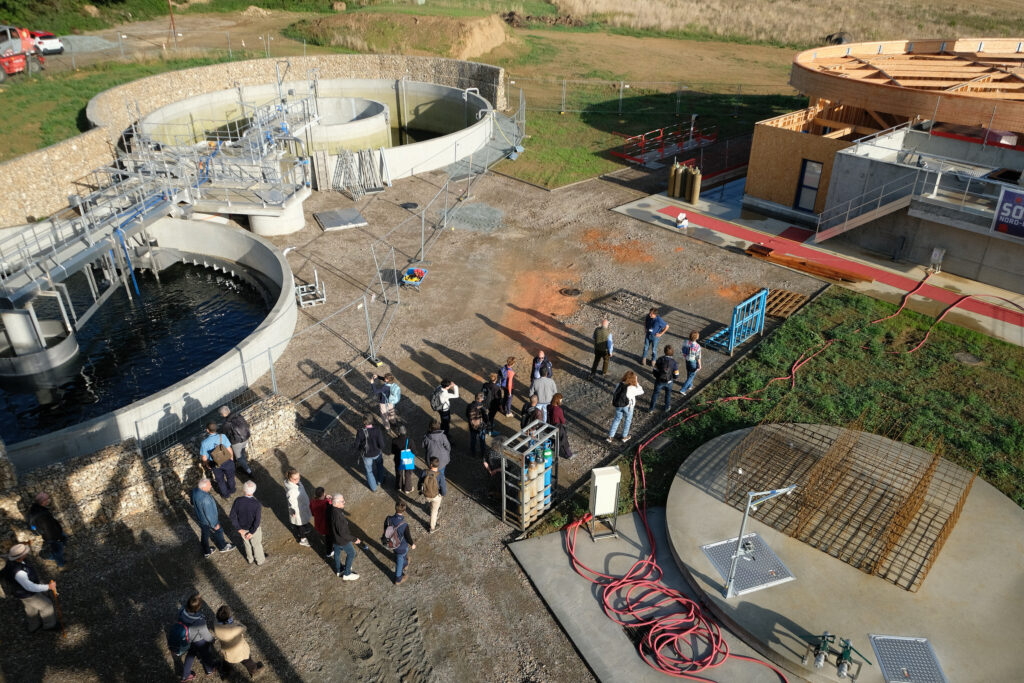
Passing through Longueil and Sainte Marguerite, the English partners were finally able to put all the pieces of the French territorial project jigsaw together. We began to be able to visualise the future nature of the floodplain, how water levels are likely to change, and what species are expected to inhabit them.
Speakers including Samuel Comont from the Syndicat Mixte des Bassins Versants Saâne Vienne et Scie explained the links to the Basse Saâne 2050 project, while director Laurent Topin outlined historical flooding in Saint Marguerite using flood markers, bringing home the challenge the local community faces with climate change and sea level rise. He described how local homeowners are adapting their properties and what the valley will look like in the coming years.
Reaching the sea front, we could observe the defensive approach that has been implemented, with a high concrete wall protecting the low-lying road behind the pebbles and sandy beach beyond. From the vantage point of this wall, we could observe the current narrow Saâne outfall and understand just how disconnected it is from its floodplain. Where we stood then, the future 10-metre breach will change the relationship between the Saâne and this floodplain for the better, allowing for adaptation to sea level rise and climate change.
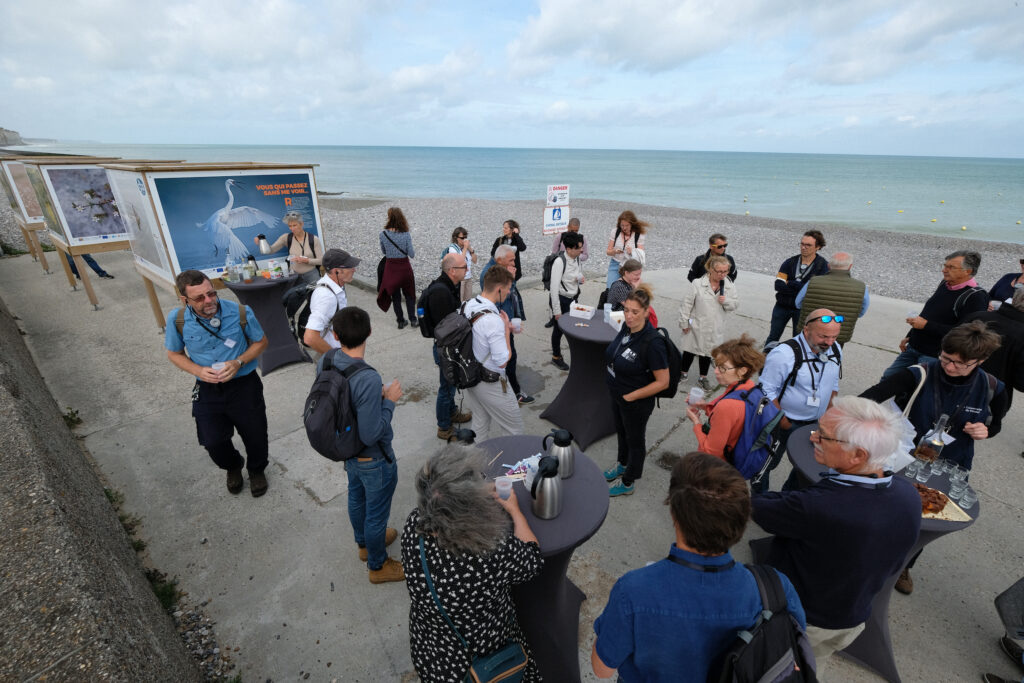
In the Otter Valley, a 70-metre breach is planned, so we were keen to learn more about the size of the Saâne breach and discuss the rationale and technical design behind the two schemes, as well as how implementation will vary.
The main engineering activities are currently clearly located at the wastewater treatment plant, with no visible disruption to the eye line of the valley. This is quite different to the LORP works, where we have a road bridge and road elevation taking place right across the floodplain.
The next stop on our tour was the current campsite location before walking to the new site on the west side of the valley. The site is a hive of activity, with earth moving, levelling, terracing, and initial buildings going up. The Mayor of Quiberville is extremely passionate about this development and is certain that it will represent a fantastic tourism infrastructure for years to come. The views are pretty good, that’s for sure!
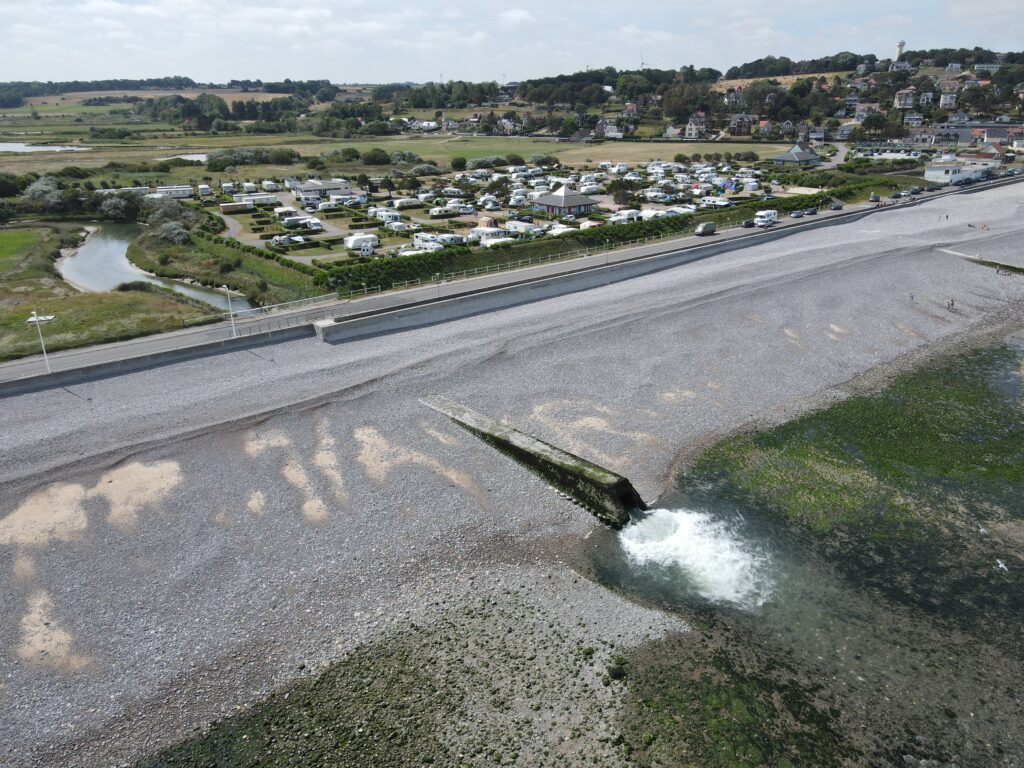
Unlike Budleigh Salterton, the community of Sainte Marguerite includes small cabins and chalets, directly behind the coastal road separating the beach and the floodplain. Challenges around the changing face of this part of the village have been overcome through community engagement and meetings.
Our fascinating tour finished here and at our final shared meal on the seafront at Quiberville, we were all keen to talk over what we had observed, discuss upcoming challenges and the future of the PACCo legacy. How will our project assist, stimulate and facilitate future adaptation projects? What’s next? How can the French and the English continue this very cordial and essential entente?
The Saâne and Otter valley projects will transform their respective sea frontages and floodplains entirely, and before we face the full force of inevitable change.
Taking our leave of our French partners, it was even clearer to us how PACCo will serve as an example of what can be achieved when international projects join forces to work with nature, towards shared goals.
